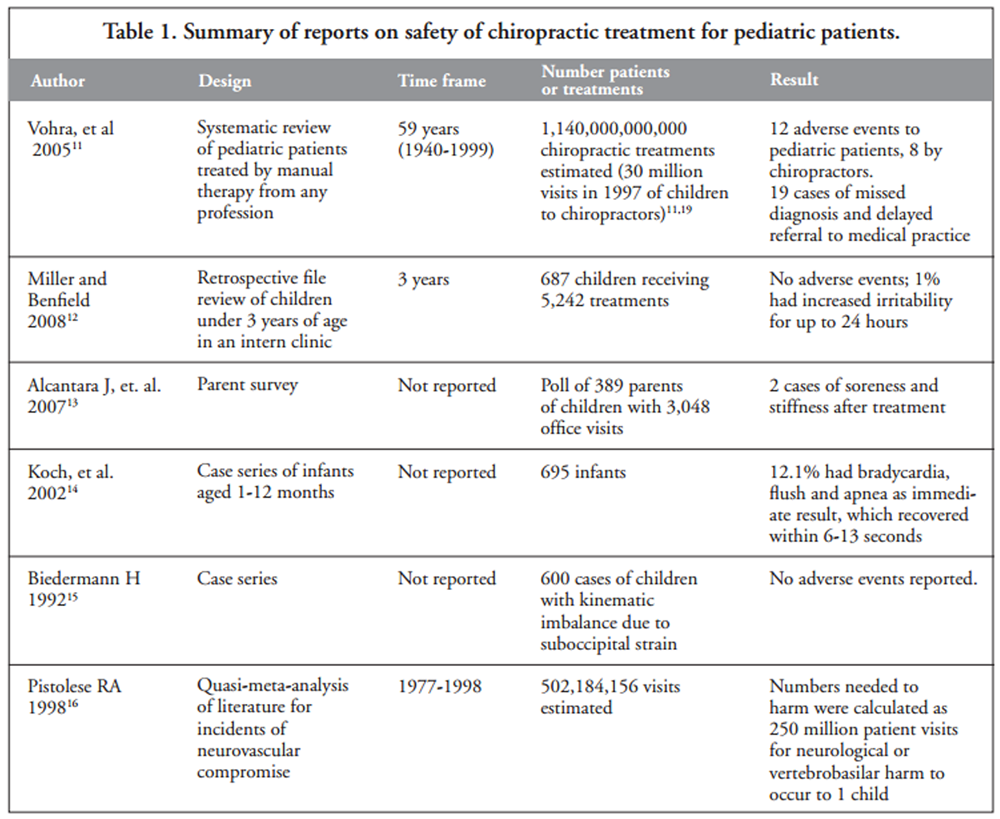Chiropractic or Osteopathic Manipulation for Children in the United States
Chiropractic or Osteopathic Manipulation for Children in the United States: An Analysis of Data from the 2007 National Health Interview Survey
SOURCE: J Altern Complement Med. 2012 (Apr); 18 (4): 347–353
Harrison Ndetan, MSc, MPH, DrPH, Marion Willard Evans, Jr., DC, PhD, MCHES, Cheryl Hawk, DC, PhD, and Clark Walker, BS, MPH
Cheryl Hawk, DC, PhD
Logan College of Chiropractic
Chesterfield, MO 63017
OBJECTIVES: The aim of this study was to describe use of chiropractic and/or osteopathic manipulation by children in the United States along with the specific health conditions for which they sought care.
METHODS: The study was a secondary data analysis of the National Health Interview Survey 2007, Child Alternative Medicine file as well as the Child Core Sample. National population estimates were generated for reported use of chiropractic or osteopathic manipulation (C/OM) by children for specific health conditions. Odds ratios (OR) and 95% confidence intervals (CI) were generated from binary logistic regression models that assessed the likelihood that children of specific characteristics would use this therapy.
RESULTS: National estimates indicated that 2.3 million children (2.3%) in the United States had used C/OM in 2007. C/OM was the most common complementary and alternative medicine procedure. Children aged 12–18 years were more likely to have seen these providers than were younger age groups (OR=3.4 [95% CI, 2.1–5.5]). Homeopathy (1.2%), massage (1.0), and naturopathy (0.3%) were the next most common procedures. The most common complaints were back and neck pain. Other conditions for which children were seen included other musculoskeletal conditions, sinusitis, allergies, and nonmigraine headaches. Racial categories did not differ significantly regarding use of manipulation, but those children with both mother and father in the household were more likely to have used this form of care (OR=1.7 [95% CI, 1.1–2.6]).
There are more articles like this @ our:



